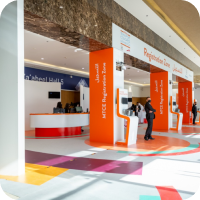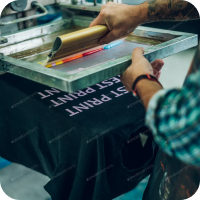The Environmental Benefits of Sustainable Fencing in Abu Dhabi
Introduction
As Abu Dhabi continues to expand with new developments and urban landscapes, the focus on sustainable solutions has never been more crucial. From energy-efficient buildings to eco-friendly infrastructure, the city is embracing greener alternatives. Sustainable fencing is one such solution that offers multiple environmental benefits while providing secure and aesthetic boundaries for various applications. This article explores the advantages of sustainable fencing, its materials, and how it supports Abu Dhabi’s eco-conscious goals.
Why Sustainable Fencing Matters in Abu Dhabi
In a desert climate like Abu Dhabi’s, where resources are scarce, and temperatures are extreme, sustainable fencing options are essential for reducing environmental impact. Traditional fencing materials often require significant resources to produce and maintain, contributing to pollution and resource depletion. In contrast, eco-friendly fencing uses sustainable materials, reduces waste, and lowers carbon emissions, making it an ideal choice for environmentally conscious projects across the UAE.
Key Environmental Benefits of Sustainable Fencing
1. Reduced Carbon Footprint
Sustainable fencing materials such as recycled metals, bamboo, and composite wood require less energy and fewer resources to produce than traditional materials like concrete and plastic. By choosing sustainable fencing, businesses and property owners can lower their carbon footprint and contribute to reducing Abu Dhabi’s overall environmental impact. This eco-friendly choice helps support the city’s larger vision for sustainable urban growth.
2. Use of Recyclable and Renewable Materials
Many sustainable fencing options are made from renewable or recyclable materials, which minimizes waste and conserves natural resources. For example, bamboo is a fast-growing, renewable resource that requires minimal water and no pesticides. Additionally, recycled metal and composite wood, often used in eco-friendly fencing, help repurpose waste materials, giving them a new life while reducing the demand for raw materials.
3. Longevity and Durability
Eco-friendly fencing materials are designed to be highly durable and weather-resistant, making them ideal for Abu Dhabi’s harsh climate. Longer-lasting materials mean less frequent replacements, reducing waste and conserving resources. For instance, composite fencing is known for its resilience against weather and wear, and it requires minimal maintenance. This durability reduces the environmental costs associated with manufacturing, transportation, and disposal.
4. Low Maintenance Requirements
Traditional fencing materials, such as untreated wood, often require regular painting, staining, and repairs, which involve chemicals and resources that harm the environment. Sustainable fencing materials, on the other hand, typically require little to no maintenance. Composite wood and recycled metal, for example, are resistant to termites, rust, and rot. This low-maintenance aspect means fewer chemicals are released into the environment and reduces water use for cleaning.
5. Preservation of Natural Resources
By using sustainable materials like recycled metals and renewable bamboo, eco-friendly fencing conserves natural resources. Traditional fencing often involves the depletion of non-renewable resources such as plastic and mined metals. Sustainable fencing helps limit this impact by opting for materials that are either rapidly renewable or recyclable, aligning with Abu Dhabi’s goals for resource conservation.
6. Support for Abu Dhabi’s Green Building Standards
Abu Dhabi has implemented green building standards and initiatives, such as Estidama, to promote sustainable construction practices. Choosing sustainable fencing supports these guidelines and demonstrates a commitment to environmental responsibility. Eco-friendly fencing materials that meet these standards contribute to higher green ratings for buildings and developments, helping to create a more sustainable urban environment in the UAE.
Popular Sustainable Fencing Materials in Abu Dhabi
Several materials stand out for their sustainability and adaptability to Abu Dhabi’s climate:
- Bamboo: A renewable and resilient material that thrives in a variety of climates and requires minimal maintenance.
- Composite Wood: Made from a blend of recycled wood and plastic, composite wood offers the natural look of wood without the environmental drawbacks.
- Recycled Metal: Aluminum and steel from recycled sources are sturdy, low-maintenance, and can be endlessly recycled.
- Living Walls: Fencing structures incorporating plants that enhance biodiversity and offer insulation, though they require more water and upkeep.
Each of these options provides a combination of durability, aesthetic appeal, and eco-friendliness, making them suitable for the region’s environmental and aesthetic needs.
Conclusion
As Abu Dhabi progresses toward a sustainable future, incorporating eco-friendly practices into every aspect of development is essential. Sustainable fencing offers an environmentally responsible alternative to traditional fencing, reducing carbon emissions, conserving natural resources, and aligning with the city’s green building standards. By investing in sustainable fencing solutions, businesses and residents in Abu Dhabi can contribute to a healthier environment and a greener cityscape, supporting long-term sustainability goals for the UAE.




 Vehicle Graphics
Vehicle Graphics Branding
Branding Stickers
Stickers Hoarding
Hoarding Exhibition Stands
Exhibition Stands UV Flatbed Printing
UV Flatbed Printing Signage
Signage Laser Cutting
Laser Cutting Screen Printing
Screen Printing Digital Fabric Printing
Digital Fabric Printing Thermal Transfer
Thermal Transfer Personalized Gifts
Personalized Gifts Promotional Products
Promotional Products Flag Printing
Flag Printing Website & Digital Marketing
Website & Digital Marketing